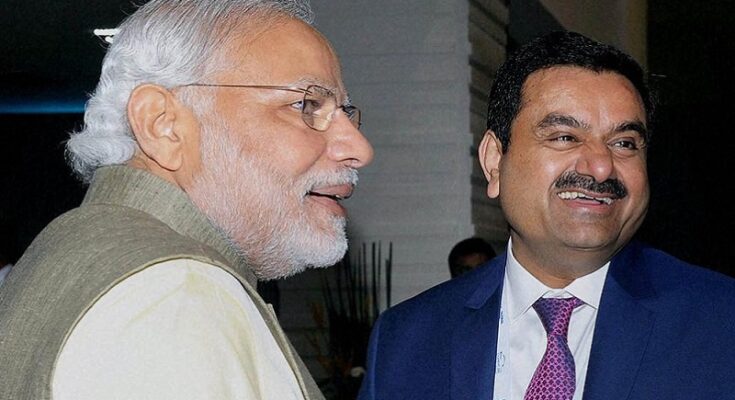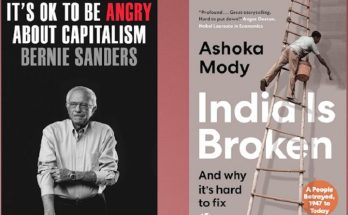By Annavajhula J C Bose, PhD
Assume that you belong to the vast and fragmented working class in New India. What is in store for you in light of the new labour relations regime that has been lately established?
“I don’t know nothin”, you might say, perhaps. But if you have read Adam Smith and Karl Marx in a ‘political economy’ undergrad course, you know that the wealth of society is made in work, by the labouring masses. And so how work, workers and working conditions are dealt with in human history and especially under capitalism over the last 250 years, is an endlessly debated topic.
As Pratap (Undated) has pointed out, the power elites say that labour reform in India is moving in the right direction even as the workers perceive it as moving completely in the opposite direction. The central government says the multiplicity of labour laws is done away with by integration.
The critics say that rather than resolving the complexity, more ambiguous complexities are created and the reform is distinctly downgrading the labour law standards in tune with the demands of the employers’ organisations.
The government has stated the reform word by word and sentence by sentence picked up from the suggestions of the employers. Very cleverly, the focus of the reform is on state level changes in laws even as labour laws are clubbed at the central level in such a way as to facilitate only a few ordinances required to amend labour laws at the central level.
The employers’ organisations have been vociferously demanding that the state governments are given the sole authority to change labour laws. Accordingly, the central government has authorised the states to fix and revise wages. All states, as a result, will eventually be compelled to downgrade wages and working conditions in order to compete for investments for their so-called ‘development’.
Now, job security and more comprehensive labour laws apply only to industrial enterprises with 300 or more workers. Actually, there are and there will be very few such industrial units. Even if certain industrial units require this much workforce, they can escape from this category of firms by easily engaging less than 300 workers on their payroll and deploy a large workforce by way of apprentices who are not considered as workers by the law of the land.
Majority of industrial units will manage to remain within the limit of small factories (less than 40 workers) to avoid applicability of 14 labour laws including the Factories Act and the Industrial Disputes Act.
If they require more workforce they can easily use innumerable unreported, invisible workers by hire and fire system without complying to any standing orders. And there is no hassle of taking permission to close down.
No labour law applies to the household industries and so they will grow like anything with their linkages, via subcontracting, to global value chains orchestrated by the multinational corporations. They have the most exploited labour including child labour.
Tiny manufacturing units with 1-10 workers do not have any industrial relations law or even occupational health and safety law applying to them. The contract labour system will come to an end without abolition as in the new system, there is scope for employers to engage less than 100 workers and do easy hire and fire by engaging a large number of apprentices.
Wages are projected to be high without there being any increase by simply adding employers’ PF and ESI contributions to wages; the resultant effect will actually reduce the take home wages of workers. Easy hire and fire in industrial units with less than 300 workers will increase the vulnerability of workers drastically and unionization of workforce will be highly difficult to achieve.
Workers are totally disempowered to exercise the rights to association and collective bargaining.
Right to strike is bludgeoned. By requirement of 14 days prior notice and then instituting conciliation proceedings, practically all the industries are deemed to be public utility services. Workers in small factories will have no right to strike. Various states are passionately curtailing the right to strike.
For example, the state of Andhra Pradesh, where the badass Kia has situated itself, has already declared the automobile industry as a public utility service. This will put an end to the wave of strikes that were witnessed since 2005 mainly on the issues of right to association and collective bargaining and the issue of ending the rampant contract labour system in the automobile sector.
Moreover, note that the Gujarat Labour Laws (Gujarat Amendment) Bill 2015 prohibits strikes in public utilities for two years, and brings out a new provision to settle various offences out of court. This will be copycatted elsewhere.
Health and safety problems of workers will increase like anything because the small factories (less than 40 workers) are put out of the Factories Act, excessive overtime is legally justified, and the list of hazardous industries is deleted in the new amendments. This is very much plausible keeping in mind the self-certifications granted to various industries under various labour laws, and labour inspectors are directed to be just facilitators. No wonder that consequently, the country is becoming a free-for-all dumping ground for hazardous industries.
This, in a nutshell, is the picture of labour relations wherein the employers are practically freed from any constraining labour law worth the name in conjunction with the dumping of the land reforms agenda and easing of laws for land acquisition from farmers for industrial and infrastructure projects, and for reducing the coverage of population under food security law.
When I recently shared this picture that has unfolded in India with the great psychologist cum economist Barry Schwartz, he was aghast.
According to Schwartz (2015), Adam Smith had erroneously sanctified stealing of happiness from workers via the division of labour and specialisation drive in factories. There is a mountain of literature on the predicaments and unhappiness of workers due to micro-measuring of employees’ performance in terms of Taylorism/Scientific Management, Fordism (Assembly Lines) and Just-in-Time and Total Quality Management (Super Taylorism) underlying the highly productive modern division of labour and specialisation. All kinds of work have turned into factory work like this.
Smith had believed that when it came to work, people were fundamentally lazy. If you want people to work, he argued, you have to make it worth their while by paying them a decent wage. This was his invention of human nature, not discovery though.
The labour law reform in India cares two hoots for even Smith’s concoction that workers need to be managed by decent wages.
Schwartz also points to the recent findings that prove that Smith was wrong in not discovering that people want a good deal more from work than a simple paycheck, which is progressively getting compressed. Workplaces need to be places that people want to be so as to be not only highly productive but also places of satisfied and happy people.
The labour law reform in India is totally oblivious to the progressive findings on these lines.
In light of all this, do you want to side with the Indian employers or scholars such as Schwartz?
If you are with the former, that means you prefer the low road; and if you are with the latter, like me, you prefer the high road but you don’t find it. Read my many low road stories (Bose, 2022).
It may also be noted that the renowned legal scholar Baxi (2007) tells us that rule of law “is always and everywhere a terrain of people’s struggle incrementally to make power accountable, governance just, and state ethical”.
And, in light of this, he reviews the rule of law in India as the dialectics of social reproduction, often violently, of rightlessness on the one hand and people’s struggles against capitalism and judicial activism to make and mark a modest reversal of that, on the other.
The storyline of this note is that the working people in India have now been completely reduced to rightless people and how they can restore human rights into governance practices in India is the moot question.
Do read also:-
- Labour in ‘Amrit Kaal’ : A reality check
- Discovering the truth about Demonetisation, edited and censored, or buried deep?
(Writer teaches in Department of Economics, SRCC, Delhi University.)
References
Barry Schwartz. 2015. Why We Work, Simon & Schuster/TED.
Annavajhula J C Bose. 2022. Economic Stories for Undergrads: More than an Education. OrangeBooks Publishing.
Surendra Pratap. Undated. The Political Economy of Labour law Reforms in India- Part III. Centre for Workers Education, New Delhi.
Upendra Baxi. 2007. The Rule of Law in India. International Journal of Human Rights. Issue 6.
Subscribe to support Workers Unity – Click Here
(Workers can follow Unity’s Facebook, Twitter and YouTube. Click here to subscribe to the Telegram channel. Download the app for easy and direct reading on mobile.)



